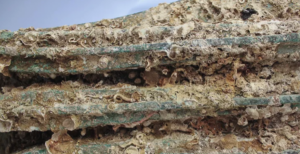More than 2,200 years ago, a battle between the Romans and the Carthaginians took place at sea off northwestern Sicily. Rome was victorious, defeating the other fleet and ending the First Punic War.
While so much was destroyed at the time, scientists have recently discovered a shipwreck teeming with underwater life. Researchers found at least 114 animal species living on a ship’s ram from a Carthaginian vessel that was sunk in the battle.
A ram is a beak-shaped battering weapon fitted to the front of a fighting ship designed to damage an enemy’s vessel. It was usually driven into the hull of another ship in order to damage or sink it.
The ram’s discovery is an important archaeological discovery. But finding it as a host for so much fauna also provides insight for scientists learning how marine animals colonize empty sites and slowly create diverse and rich communities.
“Shipwrecks are often studied to follow colonization by marine organisms, but few studies have focused on ships that sank more than a century ago,” said last author Sandra Ricci, a senior researcher at Rome’s Istituto Centrale per il Restauro (ICR), in a statement.
“Here we study for the first time colonization of a wreck over a period of more than 2,000 years. We show that the ram has ended up hosting a community very similar to the surrounding habitat, due to ‘ecological connectivity’—free movement by species—between it and the surroundings”.
Read more: Tree Hugger
Ask me anything
Explore related questions





